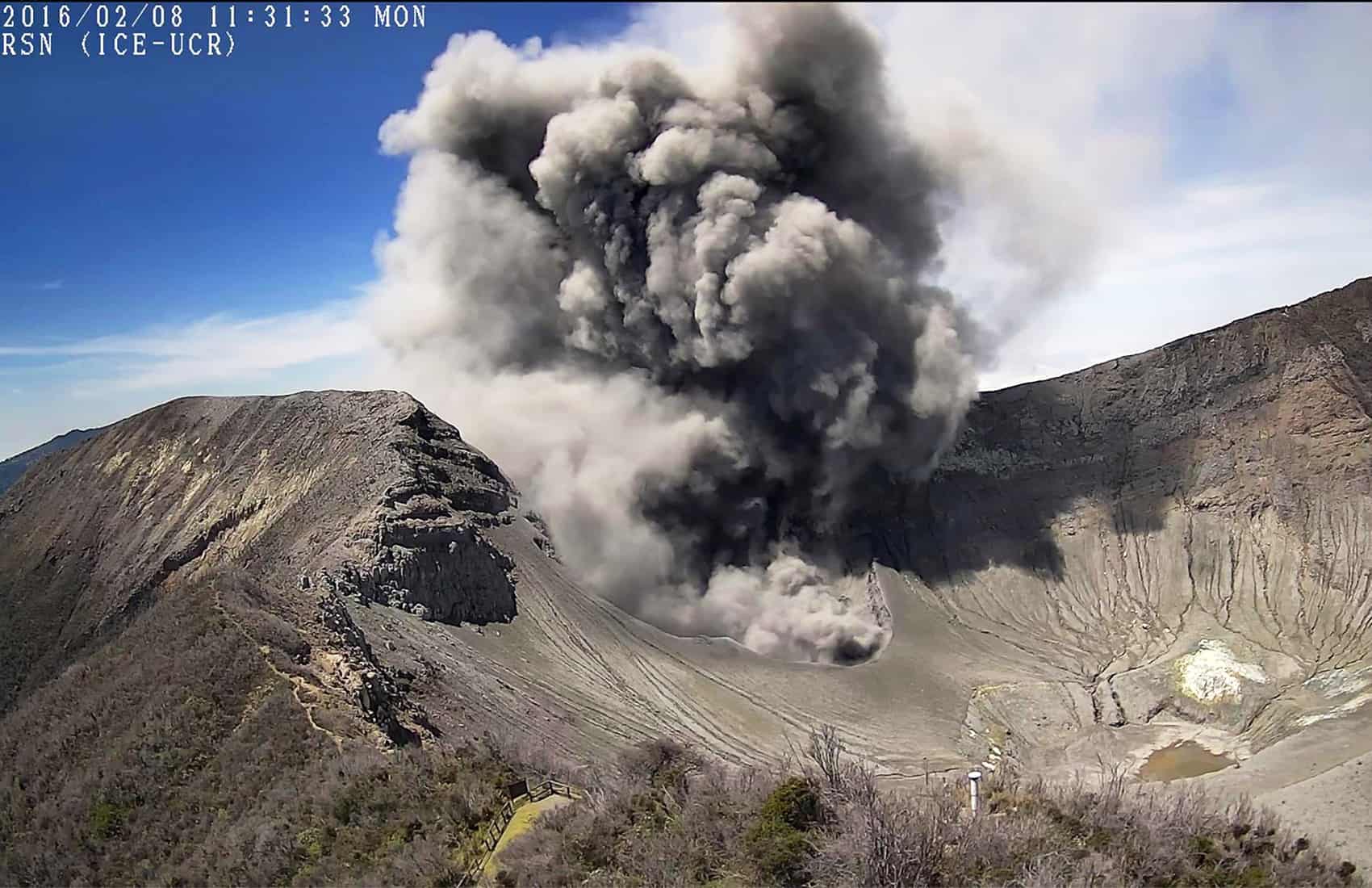Turrialba Volcano, located 50 kilometers east of Costa Rica’s capital, this month has recorded an increase in activity that so far includes five ash, gas and vapor explosions. The most recent event occurred on Monday at 5:33 p.m., according to the University of Costa Rica’s National Seismological Network (RSN).
The explosion formed an ash plume of about one kilometer high, similar to that reported during another explosion on Sunday that also included gas emanations.
https://www.facebook.com/RSN.CR/videos/1060822293981343/
Earlier on Monday RSN monitoring systems recorded an explosion at 10:24 a.m. that formed an ash plume of about 400 meters high, but shortly after it moved towards the Braulio Carrillo National Park area, the agency reported. Other similar explosions occurred Saturday at 1:50 p.m. and Sunday at 10:26 p.m.
RSN volcanologist Raúl Mora said experts noticed an increase in Turrialba’s activity since late January, along with a spike in seismic activity.
So far this month the RSN has registered tremors of moderate magnitudes in the area. Last Wednesday, Feb. 3 at 9:40 a.m., a strong, magnitude-4.4 temblor with an epicenter located 17 kilometers west of the Caribbean canton of Guápiles was reported by residents in Limón, Cartago and San José.
On Monday at 1:40 p.m., a magnitude-3.8 temblor was recorded in Santa Rosa de Turrialba, while at 9:04 a.m. on Tuesday, RSN reported a magnitude-2.9 temblor with an epicenter located 15 kilometers west of Guápiles, near the Turrialba area.
RSN experts believe more explosions likely will occur in coming days, and that considering current weather conditions, ash could reach some other areas in the Central Valley.
For tourists traveling to Costa Rica, the National Emergency Commission maintains a yellow, or preventive, alert for all areas surrounding Turrialba, and access to some areas is currently closed to visitors.






